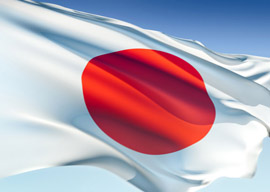
March 15, 2011

We can thank Providence that the earthquake was not 150 miles closer to Tokyo, else Japan’s dead might number in the millions.
Prime Minister Naoto Kan calls it the worst crisis since World War II. Yet, horrendous as it is, it does not, thus far, compare with that. For the earthquake dead are not 1 percent of those who perished in World War II.
Between 1942 and 1945, Japan was stripped naked of an empire that embraced Formosa, Korea, Manchuria, the entire China coast, all of French Indochina (Vietnam, Laos, Cambodia), Thailand, Burma, Malaysia, Singapore, the Dutch East Indies (Indonesia), the Philippines and the Western Pacific out to Guam and south to Guadalcanal.
She sustained 2 million military dead and 500,000 to a million civilian dead under U.S. carpet-bombing that reduced her great cities to smoldering rubble and Hiroshima and Nagasaki to atomic ash.
Yet, 25 years after the most devastating defeat in modern history, Japan boasted the second largest and most dynamic economy on earth.
Under the proconsulship of Gen. MacArthur, Japan rose to her feet, renounced war and reached an annual growth rate of 10 percent by the 1960s, 5 percent in the 1970s, 4 percent in the 1980s. Smaller than Montana and with fewer resources, she created an economy half as large as the U.S. and in many ways technologically superior.
An extraordinary accomplishment of an extraordinary people.
At the end of the 1980s, Japan seemed poised to surpass America.
It did not happen. The last two decades were lost decades, with Japan’s economy shrinking to a third of that of the United States. Last year, Japan was overtaken as the world’s second largest economy by China. Beijing now produces more automobiles and has a trade surplus with America that dwarfs that of Japan.
In 1988, eight of the 10 largest companies in the world were Japanese. Today, Japan does not have one company in the top 20 and only six in the top 100. Her national debt is 200 percent of gross domestic product.
Can Japan come back from this earthquake and 20 years of economic stagnation and political malaise to recover the dynamism she exhibited in the decades after World War II?
To do so will require a far greater miracle. The reason for such pessimism may be summed up in a single word: demography.
Japan has 127 million people, her highest population ever. Yet, the United Nations projects that 25 million Japanese will vanish by 2050. Why? Japan is the oldest country on earth, with a median age of 45 and a fertility rate below zero population growth for 40 years.
To sustain a population, the fertility rate of its women must be 2.1 children. Japan’s rate, 1.27 children per woman, is not two-thirds of what is required to replace her present population.